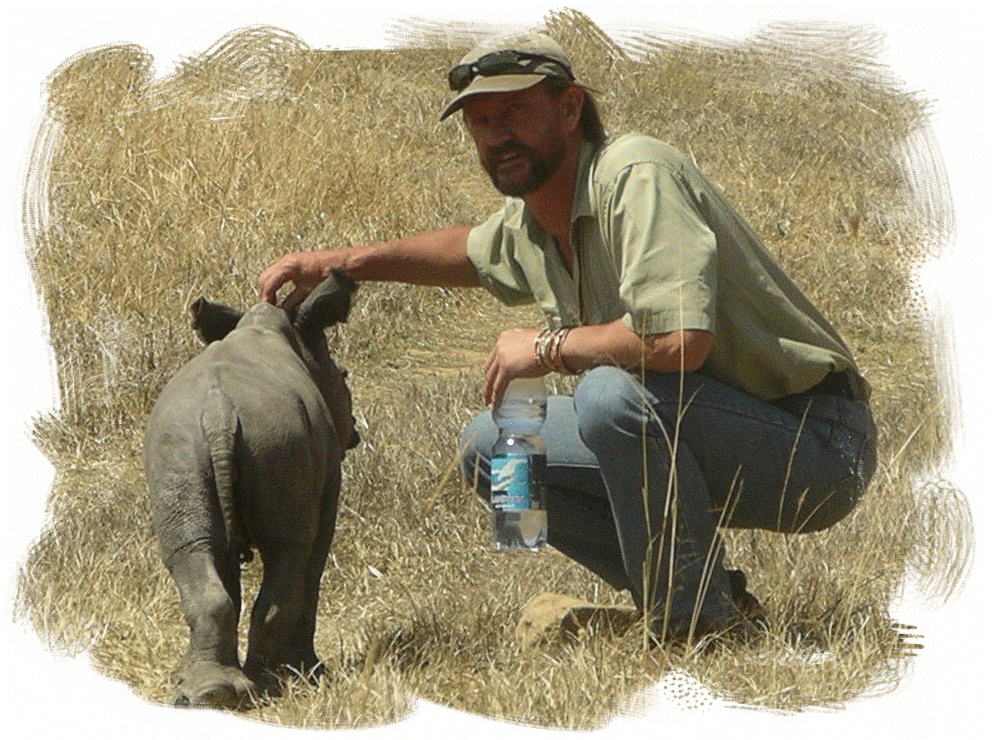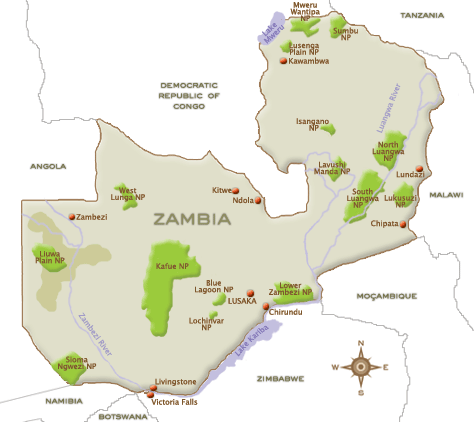Game Farming & Game Ranching in Zambia

Game farming and game ranching are collectively the single biggest wildlife production enterprise supporting renewable natural resources, that any country could wish for. Land-wise, Zambia consists of 752,618 km2 – a fraction less that South Africa – and with more than a third of the country being under-utilised agriculturally. A vast area of land is lying dormant that is not suitable for commercial farming – but it can be used for game farming and game ranching. A big factor not taken into account is that for millions of years wildlife thrived on this exact same land that we consider to be commercially nonviable and undesirable, and that we are currently not utilizing. We also do not realize that wildlife and game existed in this area for all these millions of years – without any disease-control measures to combat internal and external parasites, foot and mouth disease, Ngana, tuberculosis and brucellosis.

The Zambian game ranch industry is positioned midway between agriculture, conservation and tourism – and the industry is only now slowly starting to emerge. However, given the proper policy framework – the industry could generate huge economic, social and environmental benefits, by creating an economic incentive to better manage woodland, pasture and the Game Management Areas (GMAs). For some of the country’s land, game ranching is indeed an economically and ecologically viable alternative to current unsustainable land-use practices like pit sawing, charcoal production, and also snaring, poaching and agriculture on marginal land.
It was once said that “land has no value unless it produces” and there is no difference between an office block in town used by business entrepreneurs – or a game farm that produces wild animals in the form of trophy hunting, game breeding or venison for the hotel market – as long as it is a sustainable income for the improvement of life. In a study conducted by Dr Peter Lindsey in 2013, the estimated capital startup cost of a game ranch in Zambia – for a 2,000 ha game farm – could be in the range of US$1,074,387 or US$53,720/km² – an equivalent of US$537/ha. Land prices for non-commercial agricultural land are extremely low at an average price of US$150-220/ha. The combination between startup capital and a 2,000 ha piece of property could be approximately US$1,500,000 – depending on the area and the distance from Lusaka.

Taking into account the diversity of both habitat, wildlife and game species, this makes Zambia one of the best investor’s markets in Africa for game ranching. It gives a 20-year investment return of 15 to 31% (average of 28%). Lindsey also stated that game ranching and crocodile farming – together with game capture and trading of wildlife – have a combined annual turnover of approximately US$ 15.7 million – whereas concession hunting generated about US$16 million in 2012.
If we look at Zambian game farming from the other side – 5 years ago Zambia had ± 52 game farms covering an average of 1,500 ha per farm. This equaled 52,000 ha with a total of 156 workers and a game population of 200 LSU (Large Stock Unit) per farm – all with a total estimated value of US$10,4 million. Over the past 5 years we experienced growth to ±115 fenced game farms with nine crocodile farms, 44 still waiting release status from the Zambian Wildlife Authority, and some 11 farmers still waiting for property title from the Ministry of Lands. Relatively speaking, if we can project this over the next 20 years, Zambia could have a very lucrative industry that could help solve the problem of poverty, create jobs and prevent further deterioration of the environment.

Figure 1: Projected Growth of Game Ranches in Zambia
(All data is generated from perspectives and relevant information averages)
What will it be in Zambia – game farming or game ranching? Both of the these agricultural farming enterprises are a very important form of natural sustainable income. To better differentiate between them:
Game ranching is the extensive management of the production of free-living wild animals in a large fenced or unfenced section of private or communal land – usually for the purposes of hunting, live sales, trophy hunting of venison, tourism, and other uses. The GMAs in Zambia are an ideal example of what game ranching is all about; while
Game farming is the intensive management of the production of animals in small fenced enclosures or farms on private or communal land. This is usually for the production of marketable products like meat, hides, feathers, skins, and other similar items associated with ostrich, fish or crocodile farming.
Game ranching is a profitable industry, as is proven in South Africa and Namibia. The expansion of ranches there is actually quite recent, dating from the late 1980s, with the 1990s seeing an increasing proportion of livestock ranches converted to wildlife. Wildlife has stronger resilience to drought, and requires less maintenance and capital input than livestock. This equation is well verified for marginal land unsuitable for agriculture which can host species which are highly valuable in the international market.
In South Africa the industry grew from 206 ranches in 1981 to a staggering 10,100 ranches

currently. It generates US$2.2 billion of foreign exchange, creates 141,000 jobs directly and supports 564,000 people indirectly. The trend in Namibia, and now also increasingly in South Africa, is to consolidate ranches into large estates called conservancies. Conservancies have multiple owners. More and more individuals, enterprises or associations are partners in these joint ventures. This is an important factor that must not be overlooked by Zambia.
Zambia has identified agriculture and tourism as key industries for economic development, and more particularly commercial farming and nature-based tourism. Zambia is endowed with globally significant ecosystems. It has large tracks of natural habitat which are under increasing pressure from land conversion in various forms of unsustainable use.
The game ranching industry in Zambia is still emerging, and has not attracted communities or seriously interested Zambian investors. The ranches are not contiguous, and so management as conservancies is not currently an option. The industry is regulated by the Zambian Wildlife Authority (ZAWA) and is associated with the reasonably effective Wildlife Producer Association of Zambia (WPAZ) which sees itself as a lobbying group for Zambian game farmers. WPAZ is a member of the Farmers Union, which effectively advocates for game farmers in Zambia.
The lack of local Zambian financial investors or poor communities living in game areas is a significant limitation to the expansion of the Zambian game ranching industry. Barriers to their involvement and to industry expansion are attributed to lack of financing, specialised technical skills and community business orientation; as well as to excessive administrative procedures for investment, for operation, and for the commercialisation of the industry.

However, these factors open the market to serious international and South African investors in the wildlife and game ranching industry. Zambian Game Ranching Ltd seeks to help lower some of the barriers to communities by providing business advice, financing skills and organisation. This is by linking interested parties to international investors, technical and managerial advisers, and access to markets.
In spite of the remaining large tracts of natural habitat, wildlife has almost disappeared outside protected areas in Zambia. By allocating non-agricultural land to game ranching, communities would not only diversify their economy and learn a new trade, but also become a net contributor to the conservation of the country’s ecosystems. Land typically available for game ranching is located on unfertile hills and is unsuitable for commercial agriculture. By managing the habitat for wildlife, tree and grass cover will be maintained, thereby limiting soil erosion and maintaining the replenishment of aquifers for downstream irrigation. Wildlife ranching also enables the sustainable management of trees as timber and for energy. With the involvement of communities and the technical skills of investors, sustainable charcoal production may also be organised on the ranches.
South Africa is slowly reaching saturation point; while its’ northern neighbour, Zambia, is under-developed and brimming with game species like Puku, Black and Kafue Lechwe, Cooksons Wildebeest, Yellow Back Duiker, Sitatunga and the highly valued Western Zambian Giant Sable. Zambia could and should be the next African success story in game ranching and the protection of valuable Southern African natural resources.
MODERN GAME RANCHING THE SCIENTIFIC WAY
Phil C. Minnaar
Director/Consultant/Pilot
(ZIEA Registered Estate Agent)
Email: wildlifeservices@bwana-game.com
Office: +260 97 777 0488
Mobile: +260 97 515 0505




